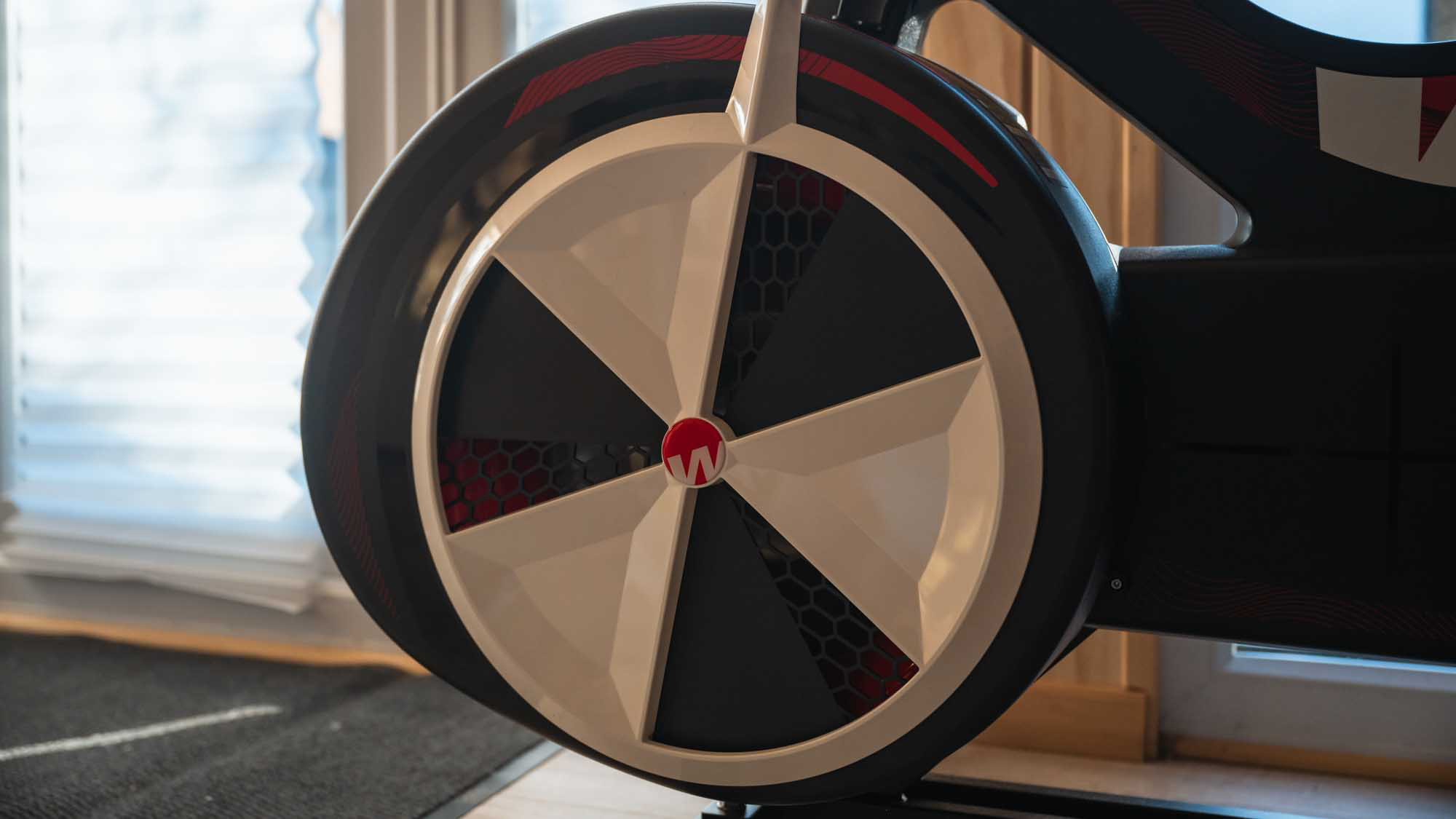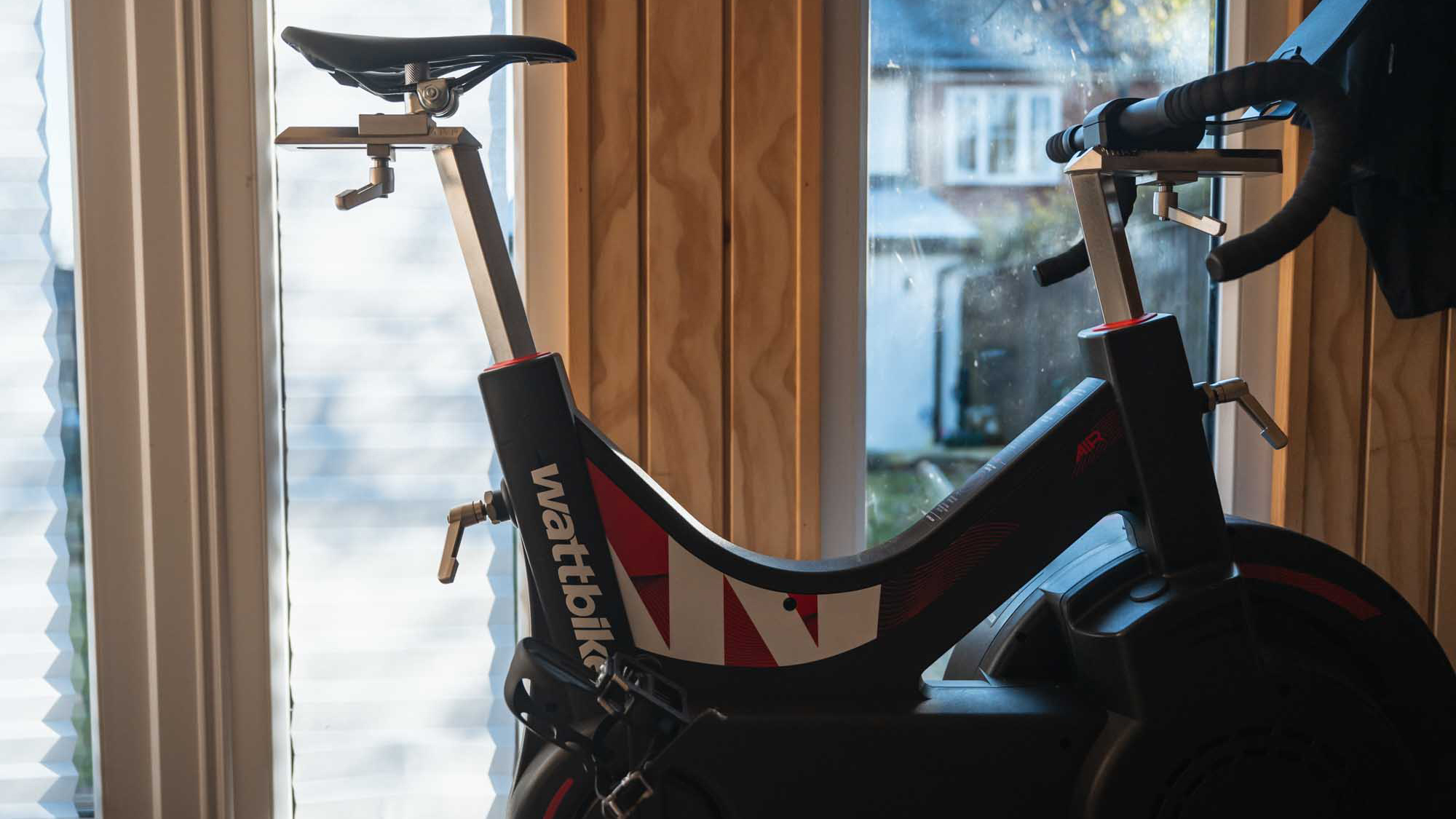Wattbike Air review: Elite training tool but not without compromise
The brand's mid-range stationary bike delivers pro-level performance with precise data tracking and a solid ride feel, but its manual resistance and high price tag may leave some cyclists wanting more


The Wattbike Air delivers a realistic, data-rich riding experience with solid build quality and detailed performance analysis. However, its manual resistance control and noisy operation make it less immersive than similarly priced smart trainers. It’s a great tool for focused training but feels pricey without interactive features.
-
+
Rock solid build
-
+
Pedalling analysis is unique
-
+
Wattbike Hub has plenty of training tools
-
+
Great ride feel
-
-
Noisy
-
-
Seems expensive compared to the Wattbike Atom
-
-
Manually controlled resistance
Why you can trust T3

When winter weather sidelines outdoor rides, finding an indoor training setup that feels as engaging and effective can be a challenge. Enter the Wattbike Air – a competent exercise bike designed to bridge the gap between high-performance training and user-friendly functionality.
Sitting comfortably between Wattbike's entry-level models and the premium Atom, the Air promises accurate data tracking, robust construction, and a ride experience that feels impressively close to the real road. Powered by air resistance, it delivers a smooth and responsive ride that adapts to your effort, while the Wattbike Hub app offers a wealth of training plans and performance metrics to keep you motivated through the off-season.
The Wattbike Air faces stiff competition in its price range from smart turbo trainers that offer more interactive features for less money. Its manually controlled resistance and noticeably noisy fan might raise eyebrows for those seeking a seamless indoor riding experience. Still, its pedalling analysis and rock-solid build make it a tempting addition for dedicated cyclists.
After weeks of testing through cold, wet months, I put the Wattbike Air to the test to see if it truly earns its place in a serious training setup—or if it’s simply a premium spin bike with a hefty price tag.
Wattbike Air Review
Price and availability
The Wattbike Air was launched at the same time as the Wattbike Proton, in October 2024, and is available to buy now at Wattbike UK for a recommended price of £1,895 (approx. $2,329.54/ AU$3,762.98). The company has US and Australian sites but only sells the Atom in those countries.
Design and build quality

Step into many gyms, and they'll be a lineup of Wattbikes; famed for their accurate data, they have become the stationary bike of choice for those looking for a cardio hit and keen cyclists hoping to fine-tune their training. I’ve always preferred to do my indoor training on my bike using a turbo trainer as the position is the same as to what I would ride outside and I can also fold away the turbo when not in use to save space.
The Wattbike Air is a much more permanent feature but does have a slightly smaller footprint than a bike and turbo setup. Construction is very sturdy, with no discernable flex or movement when riding hard. I found it easy to move around the room despite its 55kg weight, as there are a pair of small wheels on the front of the bike.
Get all the latest news, reviews, deals and buying guides on gorgeous tech, home and active products from the T3 experts
The bike does require external power, and this is delivered via a USB-C cable that plugs into the back of the bike; I found this to be a welcome change to the enormous power bricks that are needed for my Wahoo Kickr and meant that I didn't have to remember which generic black power adaptor is for what device.
Bike fit is crucial when riding indoors, even more so than outdoors, as you typically move around a lot less and sit in the same position indoors, which can be uncomfortable if your fit on the bike is compromised. This is one of the reasons why I prefer a turbo setup but the Wattbike Air has a huge amount of adjustability to help get your fit dialled in.
Almost everything is adjustable without tools; bar height, stem length, saddle height and saddle fore and aft adjustment. It’s simply a case of undoing the chunky metal handles, moving the part and re-tightening. I found I could replicate my road bike setup on the Air armed only with a tape measure and some patience.
I am about 6’3 tall and found I was nearing the maximum extension on the seatpost, so if you're taller than me, I’d recommend an ‘XL Seatpost’ (available from Wattbike) to make sure your fit is correct. The Air comes with a pair of basic pedals with toe clips, but I opted to swap these out for a pair of SPDs that would work with my cycling shoes.
Performance


Wattbike has its own training platform called Wattbike Hub, which has a host of training plans, workouts and challenges to keep you engaged. The Air will also communicate with various training platforms such as Zwift, TrainingPeaks, Rouvy and many more. However, the Air is essentially a ‘dumb trainer’, so it cannot adjust the resistance to simulate gradients or hold a specific wattage for a workout.
The workout is displayed on a tablet (not included) and fits into a rubber-sized stand on the handlebars that holds the tablet securely, and I had no worries about it falling off during hard efforts. The Air paired to the tablet without any issues and I was up and riding within minutes. All of your key metrics are displayed on screen, from power, heart rate, workout details as well as pedalling analysis which I found to be very interesting and something that I’m not able to view on my normal turbo trainer.
Once the workout is complete, it can be uploaded to your platform of choice automatically for further analysis. My only criticism of using a tablet to display your ride info is that the Air should be fitted with a USB-C port near the tablet to allow it to be charged whilst in use, rather than having to remember to charge it up before a workout.

Resistance is taken care of by air; the transmission drives a large fan at the front of the bike, which the rider can adjust a series of vents to allow for more or less air to pass through, altering the resistance similar to a rowing machine. I found the ride to be very smooth and realistic, easily matching the feel of a high-end turbo trainer. Once up to speed, though, the fan does generate a lot of turbulent air and noise, so it’s probably not the ideal choice for a small space, as the wind could easily send a pile of papers flying around the room.
Overall, I’ve got very few gripes with the functionality of the Wattbike Air, my main one being the lack of hood. The traditional drop handlebars are perfectly comfortable, but I’d like to be able to replicate my road bike setup and having the hoods to hold onto would go further to achieving this. The more expensive Wattbike Atom has virtual shifting, so it has a pair of stubby hoods to replicate a shifter; I’d like to see these on the Air, obviously without the shifting internals, but it would provide another hand position.
Verdict

There’s no denying the Wattbike Air is a fantastic training tool, but I’m not sure how it fits into the rider’s training arsenal. A top-end smart turbo trainer such as the Wahoo Kickr Move costs less and can control the resistance for increased immersion, as well as replicate some of the movement experienced whilst riding.
For those with a dedicated training space looking for the ultimate indoor riding experience, the Wattbike Atom is a little more expensive but brings with it virtual shifting and resistance control, which will interface great with Zwift or using ERG mode on the Wattbike Hub workouts for a more rounded training approach.
Also consider
A number of brands that produce turbo trainers have branched out into full bikes, including Wahoo with the Kickr Bike Shift (£2199) and Tacx Neo Bike Pus (£3499). These are both more expensive than the Wattbike Air and offer similar features. The Zwift Ride and Kickr Core is the most affordable full bike setup, costing £1199, which, in my eyes, represents excellent value for money. For those with a bike looking for a turbo trainer, there are a host of options for all budgets.

Matt has a passion for the outdoors whether on foot, two wheels or by paddle. After a brief foray into the bike racing scene, Matt armed himself with an OS map and a sense of adventure, and decided the endless miles of trails in the Scottish highlands were more his idea of a good day out.
Never one to sit still (or indoors), he can often be found riding and hiking in foul weather, testing the latest bit of kit or just out for a good time.
Having spent his formative years loitering around the local bike shop rather than sneaking into the pub, he’s spent far too long tinkering and fixing his ever evolving fleet of bikes so at least one of them is in a fit state to be ridden on an unsuitable adventure.
When Matt isn’t riding bikes or walking up hills, he’s a freelance photographer specialising in the hospitality and outdoor sectors and can be found shooting for clients across the country.